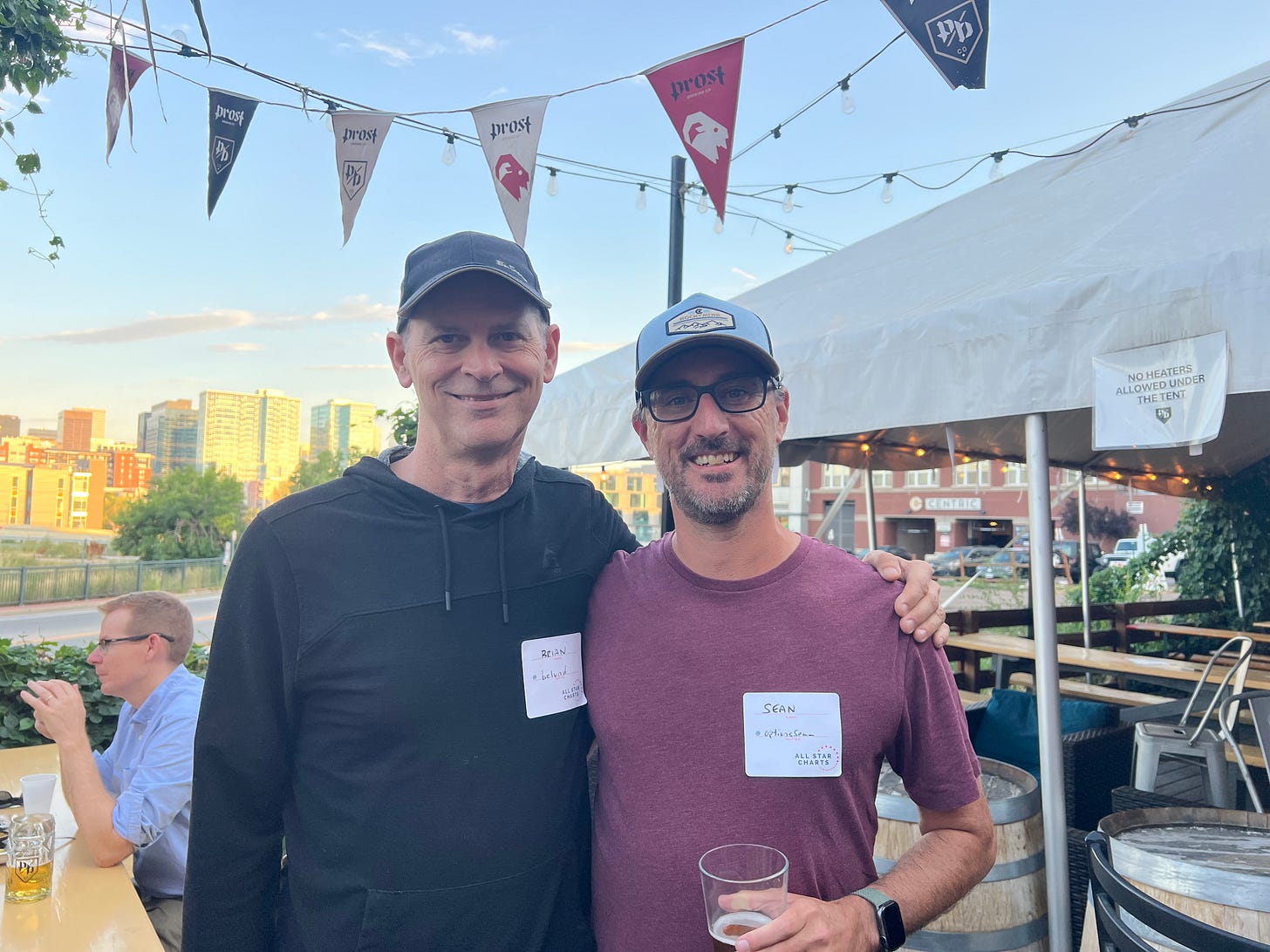The Lund Loop Daily Update: Colorado Edition -Day 2
A review of today's action and a look at the profit opportunities for the next trading day.
Note: I’m on vacation so the Daily Update this week will be (mostly) dispatches from Colorado. We’ll return to our normal program starting August 18th.
In the depths of Covid, California did some stupid shit. Like closing playgrounds, arresting people for surfing, and dumping sand into skate parks.
It was during those dark days of the pandemic—an event we were told would forever change the way we lived, but didn’t—that I discovered the Los Angeles Arboretum. It was one of the few places—along with liquor stores—that was allowed to remain open.
Technically, it was a re-discovery. I’d gone there a few times over the years, but this time I went all in: bought an annual family pass and, almost every Saturday since, you’re likely to find my wife and me—and sometimes the kids—walking the grounds.
This is all to say we are big dendrophiles, which is the closest “-phile” term you’ll find for people who love arboretums. And thus, we spent the morning of Day 2 exploring the Denver Botanic Gardens.
Stunning would be an understatement.
At 127 acres, the LA Arboretum is more than five times larger than the Botanic Gardens, but it was essentially created by drawing boundary lines around a patch of Southern California nature and declaring, “Okay, now we have an arboretum.”
In contrast, the Botanic Gardens were designed—purpose-built to blend natural landscapes with structures, art, and water features. Much of it can only be discovered by wandering down winding paths and branching trails, many of which conceal their destination until you arrive.
You round a corner expecting a bench, and instead find a koi pond framed by willows. Or you follow a shaded walkway and suddenly emerge into a riot of wildflowers. It’s the kind of place where you wander without a plan, letting the paths decide what you see next.
The whole experience was a feast for the senses. So much so that I’d be hard-pressed to pick my favorite part of the grounds.
However, I must confess a special fondness for an amazing parallel hedge row. I couldn’t help muttering to myself, “Man, I could use one of these between me and the neighbors…maybe two, just to be safe,” the bitter loner in me silently raising a toast to horticultural privacy.
After that it was a quick lunch, then over to the Denver Art Museum, which is actually a trio of buildings: the Hamilton, the Martin, and the Kirkland.
Despite housing mostly standard museum fare, there were a few standouts. Chief among them was the “Arts of Asia” collection, featuring an exceptional exhibition of Korean Buncheong ceramics, ancient Qur’ans, and intricate textile art.
Unfortunately, there was also an utterly ridiculous exhibition entitled “History is Painted by the Victors,” which they might as well have called “America is Bad.”
Hard pass.
One of the things I love about going to a museum is knowing I’ll always find what I call “the stunner”—a piece that stops me in my tracks and lingers in my mind long after I leave.
This trip’s stunner was in the European and American Art Before 1900 collection.
Despite being in the same room as dozens of Monets, Renoirs, Cézannes, and even a Van Gogh—all now framed behind glass, thanks to soup-throwing eco-terrorists—this piece left them in the dust.
It also prompted a surprisingly deep conversation with my son.
“What do you think is happening in that painting?” I asked him.
“Hmm,” he said, pausing—maybe waiting for it to animate like something on TikTok. After about a minute, he said, “Well, the child looks like it’s dying, and his mother is trying to keep him alive with her love.”
I’ll admit, that took me aback a bit and may have provoked a slight increase in ocular moisture.
“Right,” I said. “But what about that figure on the left? Who do you think that is?”
“I don’t know,” he said. “Someone trying to curse the child?”
“Close,” I said. “That’s the Devil. He’s unseen by the mother and child, but he’s there in the shadows, trying to kill the child. And the mother is trying to protect him.”
“Ah, that makes sense.”
Then we went up and read the description:
The Family of Street Acrobats: The Injured Child (La Famille du Saltimbanque: L'Enfant Blessé), c. 1873.
Gustave Doré loved the French street acrobats known as “saltimbanques.” This piece portrays a wandering acrobat family in Paris, mourning their child who was mortally wounded in the head during a tightrope performance. Doré was deeply moved by the incident and felt compelled to create not just one, but two versions of this painting.
And just like that, the theoretical became the tangible, and we had a great discussion about art, symbolism, and personal interpretation—worth many times the price of admission.
After returning to our hotel for a short rest, we headed out to Prost, a local take on a German beer hall, where my good friend Sean McLaughlin was hosting a trader’s meet-up.
Sean’s a great guy, and one of the first people from FinTwit I met in real life. We’ve crossed paths many times over the years, but ironically, the last time we were together in Colorado—Boulder, to be exact—was also in a German beer garden.
The meet-up was a blast, but the highlight for me was getting to meet about a half dozen members of The Lund Loop community in person. And I’m happy—though not surprised—to report that each one was intelligent, interesting, and most importantly, funny.
Tomorrow we leave Denver and head to Breckenridge. See you then.
-B
It should go without saying - but I’ll say it anyway - all opinions expressed in The Lund Loop are my own personal opinions and don’t reflect the views of my employer, any associated entities, or other organizations I’m associated with.
Nothing written, expressed, or implied here should be looked at as investment advice or an admonition to buy, sell, or trade any security or financial instrument. As always, do your own diligence.













